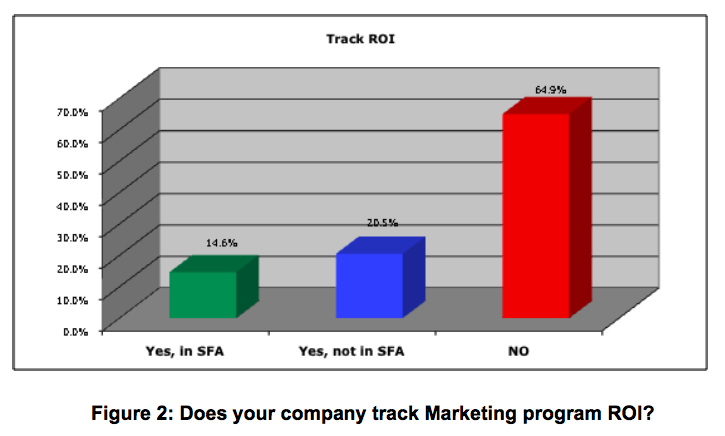Forrester Report Highlights 4 KPIs To Accelerate Lead Management ROI
- Published in Feature Articles
While there is no secret sauce that guarantees success ROI from a marketing automation rollout, a new report from Forrester found four key practices which proven to accelerate time to value on lead management initiatives: profiling and targeting, lead scoring, mapping content and nurturing early-stage buyers.
 The report, titled“How Managing Leads Pays Off In A Stronger, More Qualified Pipeline,” was commissioned by Silverpop. Forrester surveyed 15 senior-level marketers to gauge their experiences in using lead management automation.
The report, titled“How Managing Leads Pays Off In A Stronger, More Qualified Pipeline,” was commissioned by Silverpop. Forrester surveyed 15 senior-level marketers to gauge their experiences in using lead management automation.
Laura Ramos, VP, Forrester Research, said the report found developing consistent, repeatable processes is helping companies achieve stronger, more qualified sales pipelines. In addition, the report found companies that align and plan are achieving a greater visibility into the impact of marketing on sales and can better account for marketing spend against business results.
“Where we’re heading, marketing is going to become more essential in the BtoB marketplace and will scale, and the organization will demonstrate faster or stronger growth when they invest in marketing practices that build that dialogue earlier in the process,” said Ramos. “Marketing will essentially turn over well qualified demand to sales and the sales costs go down as a result.”
Ramos added it’s difficult to define the “secret sauce” for behavioral indicators, and that it, like other automated processes, must be defined based on an individual organization’s business objectives and criterion. However, the report did highlight the four key performance indicators as paths to success:
1. Profiling and targeting. “Learn who your best customers are, how they buy from you, and which activities or behaviors increase their propensity to buy. Prioritize what you learn against the new opportunities and audiences you want to pursue.”
2. Lead scoring. “Use what you learn from customer profiling to create lead definitions. Sit down with sales to discuss lead quality, select scoring criteria, assign values to each, and model how scores change in response to specific events or triggers.”
3. Content. “Map buyers’ information needs against the purchase process uncovered in profiling to determine what type of content different audiences need at different stages of decision-making. Match current content assets against this map, and look for gaps to fill.”
4. Nurture early-stage buyers. Answer the questions: “What happens when leads fail to qualify, and how do we get them moving down the path to purchase again?” Use discussions with sales to plan your first simple nurturing campaign based on the activities that engage potential buyers successfully.
 The report advised marketers to take a systematic approach to lead scoring in order to scale and measure the impact of marketing activities. Marketing programs like advertising, direct marketing, promotions, or events — whether conducted online or offline — create responses that marketers must sort through quickly, the report says. Without an orderly approach, lead qualification becomes subjective, and the results are suspicious to sales.
The report advised marketers to take a systematic approach to lead scoring in order to scale and measure the impact of marketing activities. Marketing programs like advertising, direct marketing, promotions, or events — whether conducted online or offline — create responses that marketers must sort through quickly, the report says. Without an orderly approach, lead qualification becomes subjective, and the results are suspicious to sales.
When asked to describe the challenges lead management automation helped resolve, 2/3 of the marketers interviewed said that they invested in this technology because they needed more consistent ways to qualify the leads they generated.
“I think [lead prioritization] is an iterative process and the people that are successful with it sit down with sales the first time and have a conversation about what makes for a great lead, and look at that from not only an objective, factual standpoint for their kind of business, but also from implicit deed and behavior side of things,” Ramos said. “Until you have that conversation and understand the buyer’s journey, and that may vary by industry, geography, etc, then refine. The better companies are the ones that segment and understand their target audience better.”
Content is King
As marketers devote more attention to outsourcing their efforts to step outside the traditional messaging box, the survey found that success is largely attributed to content planning.
“We found that [lead management] is more about having the things in place that make demand management work and content is key,” Ramos said. “When we surveyed and asked what made people successful, they brought up content, that you can never have enough of it and you have to keep cycling it and keep it relevant for the audience you serve."
Ramos said marketers should be aware that emphasizing content is not only about writing hefty white papers to push out to prospects, but working various media channels to offer shorter, more digestible content. She advised marketers to leverage written, audio and visual formats to repurpose existing content.
“We’ve seen in other research, that the economy has forced businesses into more digital channels using or familiar with in the past and it’s no one thing, but the combination of how you use digital and physical channels to reach the right audience and engage them in the dialogue,” she said.
The report emphasized the importance of focusing on what customers and prospects do, not what they say. Survey respondents indicated that the most crucial channels to marketing programs rank as follows:
- White papers
- Social Media
- Email marketing
Acknowledging the growing interest around social media, Ramos cautioned that social media shouldn’t necessarily be relied on as a source for qualified leads, so much as a platform to foster engagement.
“I see social media as a tool marketers are looking at to create awareness and demand, and I think it’s going to be more of a tool for how to establish and maintain relationships, grow those customer relationships and ultimately, turn those customers into advocates for you,” she said. “From a marketing standpoint, as a communication medium, it is certainly a new set of technologies that will very much change the way business is done.”
Ramos suggested social technologies should also be used to enable internal associates to collaborate. “The fact that customers and prospects are using social channels forces us to figure out how to listen to what’s going on and support them,” she said. “When it comes down to the traditional marketing campaign to generate demand, social is apart of that, but not the leading part.”
In addition to social media, Ramos advised marketers to focus on four core areas: Web site; email (from a conversation/dialogue standpoint, not from an acquisition standpoint); search marketing; and qualification (telesales).

